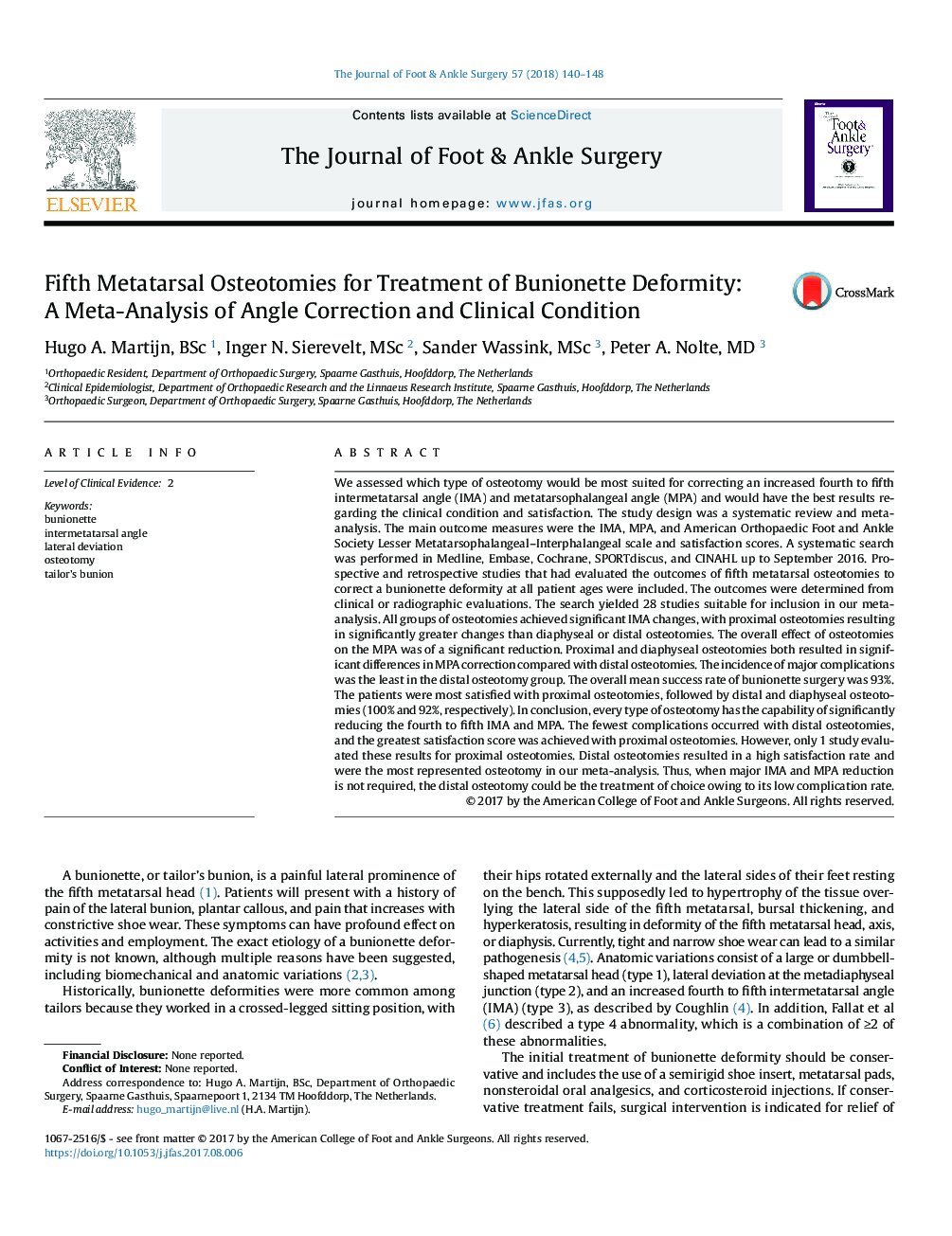| Article ID | Journal | Published Year | Pages | File Type |
|---|---|---|---|---|
| 8603413 | The Journal of Foot and Ankle Surgery | 2018 | 9 Pages |
Abstract
We assessed which type of osteotomy would be most suited for correcting an increased fourth to fifth intermetatarsal angle (IMA) and metatarsophalangeal angle (MPA) and would have the best results regarding the clinical condition and satisfaction. The study design was a systematic review and meta-analysis. The main outcome measures were the IMA, MPA, and American Orthopaedic Foot and Ankle Society Lesser Metatarsophalangeal-Interphalangeal scale and satisfaction scores. A systematic search was performed in Medline, Embase, Cochrane, SPORTdiscus, and CINAHL up to September 2016. Prospective and retrospective studies that had evaluated the outcomes of fifth metatarsal osteotomies to correct a bunionette deformity at all patient ages were included. The outcomes were determined from clinical or radiographic evaluations. The search yielded 28 studies suitable for inclusion in our meta-analysis. All groups of osteotomies achieved significant IMA changes, with proximal osteotomies resulting in significantly greater changes than diaphyseal or distal osteotomies. The overall effect of osteotomies on the MPA was of a significant reduction. Proximal and diaphyseal osteotomies both resulted in significant differences in MPA correction compared with distal osteotomies. The incidence of major complications was the least in the distal osteotomy group. The overall mean success rate of bunionette surgery was 93%. The patients were most satisfied with proximal osteotomies, followed by distal and diaphyseal osteotomies (100% and 92%, respectively). In conclusion, every type of osteotomy has the capability of significantly reducing the fourth to fifth IMA and MPA. The fewest complications occurred with distal osteotomies, and the greatest satisfaction score was achieved with proximal osteotomies. However, only 1 study evaluated these results for proximal osteotomies. Distal osteotomies resulted in a high satisfaction rate and were the most represented osteotomy in our meta-analysis. Thus, when major IMA and MPA reduction is not required, the distal osteotomy could be the treatment of choice owing to its low complication rate.
Related Topics
Health Sciences
Medicine and Dentistry
Orthopedics, Sports Medicine and Rehabilitation
Authors
Hugo A. BSc, Inger N. MSc, Sander MSc, Peter A. MD,
